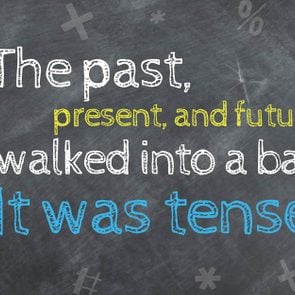“Stationary” vs. “Stationery”: What’s the Difference?
Updated: Mar. 02, 2023

Struggling to differentiate stationary vs. stationery? It's confusing, sure. But it's not impossible, if you've got the right tips to help.
English is not an easy language to master—even native speakers can get tripped up. One such cause for confusion is homophones: words that have different spellings and meanings but sound the same. Common examples are there, their and they’re; other homophones include discreet vs. discrete, elicit vs. illicit and stationary vs. stationery.
But it’s not just homophones that make English confusing. Other oddities include homographs (words that are spelled alike but differ in meaning), inconsistent spellings or just general confusion based on similarity, such as home in vs. hone in, loose vs. lose and flush out vs. flesh out. Add to the mix words with similar meanings that are difficult to choose between (historic vs. historical and envy vs. jealousy) and you have an unusual and sometimes humorous language. With social media posts and near-constant written communication in the form of texts and emails, identifying—and spelling correctly—the word we actually mean is on broad display.
To avoid grammar mistakes that make you look bad, get a better understanding of stationary vs. stationery. What’s the difference between them, and how can you remember which to use? Read on for tips that put an end to the guesswork.
What does stationary mean?
Stationary with an “a” is defined as something that is fixed in a station, course or mode. It’s immobile. It’s an adjective, so it describes things—one being a stationary bike. Unlike other bicycles, stationary bikes do not move; they’re intended for exercise only and don’t take us from point A to point B.
Examples of stationary in a sentence
- Listening to music makes riding a stationary bike at the gym more interesting.
- When my car is stuck in traffic and stationary, I turn off the engine to avoid producing pollution.
- The weather front remained stationary over the Midwest.
This doesn’t have to be one of those confusing grammar rules. To help you differentiate stationary vs. stationery, remember that stationary with an “a” means to stay (which also has an “a”) in one place.
What does stationery mean?
Stationery with an “e” is the paper on which we write letters. It’s a noun and a thing on which you write that often has a pattern, monogram or matching envelopes.
Examples of stationery in a sentence
- Appealing stationery is a relatively affordable luxury.
- It can be frustrating to make a mistake, in a letter or note, when you’re writing on special stationery.
- A handwritten thank-you note on professional stationery can set you apart from other job applicants.
You can see from these two meanings that, while these could be everyday words people misspell, when it comes to stationary vs. stationery, only one spelling will be right. But how can you remember which is which? Fortunately, some easy tips will help.
Tricks for remembering stationary vs. stationery
Like many grammar rules that help you sound smarter, there are simple tricks for getting these two straight. First, the word letter is spelled with an “e.” Stationery also includes the letter “e,” while stationary does not. Thinking “letter” will keep you on track because you write letters on stationery, not stationary. You can also remember that a store that sells formal paper is called a stationer. At a stationer, you can buy all kinds of stationery.
Keep these tips in mind, and you’ll no longer fear they’re words you’re using wrong. Go on and write them with confidence—on your nicest stationery!
Stationary vs. stationery: Test your knowledge!
Sources:
- Merriam-Webster: “Homophone”
- Merriam-Webster: “Stationary”
- Merriam-Webster: “Stationery”





















